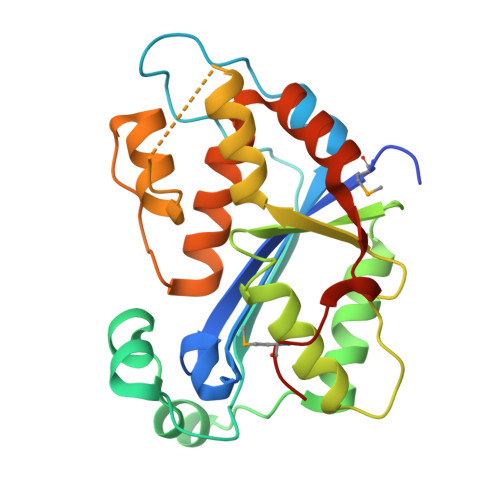❮
Member 1 of 25
❯

Explore in 3D: Sequence Alignments
Three-prime repair exonuclease 1
UniProtKB accession: Q91XB0
Grouped By: Matching UniProtKB accession
Group Content:
Polymer Entities matching query 25
Go to UniProtKB: Q91XB0
UniProtKB description: Major cellular 3'-to-5' DNA exonuclease which digests single-stranded DNA (ssDNA) and double-stranded DNA (dsDNA) with mismatched 3' termini (PubMed:10391904, PubMed:11279105, PubMed:15254239, PubMed:17293595, PubMed:17355961, PubMed:18780819). Prevents cell-intrinsic initiation of autoimmunity (PubMed:18724932, PubMed:24218451). Acts by metabolizing DNA fragments from endogenous retroelements, including L1, LTR and SINE elements (PubMed:18724932). Plays a key role in degradation of DNA fragments at cytosolic micronuclei arising from genome instability: its association with the endoplasmic reticulum membrane directs TREX1 to ruptured micronuclei, leading to micronuclear DNA degradation (By similarity). Micronuclear DNA degradation is required to limit CGAS activation and subsequent inflammation (By similarity). Unless degraded, these DNA fragments accumulate in the cytosol and activate the cGAS-STING innate immune signaling, leading to the production of type I interferon (PubMed:18724932). Prevents chronic ATM-dependent checkpoint activation, by processing ssDNA polynucleotide species arising from the processing of aberrant DNA replication intermediates (PubMed:18045533). Inefficiently degrades oxidized DNA, such as that generated upon antimicrobial reactive oxygen production or upon absorption of UV light (PubMed:23993650). During GZMA-mediated cell death, contributes to DNA damage in concert with NME1 (By similarity). NME1 nicks one strand of DNA and TREX1 removes bases from the free 3' end to enhance DNA damage and prevent DNA end reannealing and rapid repair (By similarity).
Group Members:
Query History
❮
1 / 1
❯
Release Date:
Structure Features
Determination Methodology
Sequence Features
Number of Source Taxonomies
Experimental Features
Experimental Method
Resolution
Organisms
Organism
Taxonomy
Protein Domains
SCOP/SCOPe Domain
CATH Domain
ECOD Domain
InterPro Domain
Function
Enzyme Classification
GO Molecular Function
[ 4+ ]
GO Biological Process
[ 47+ ]
GO Cellular Component
Phenotype Association
[ 5+ ]












